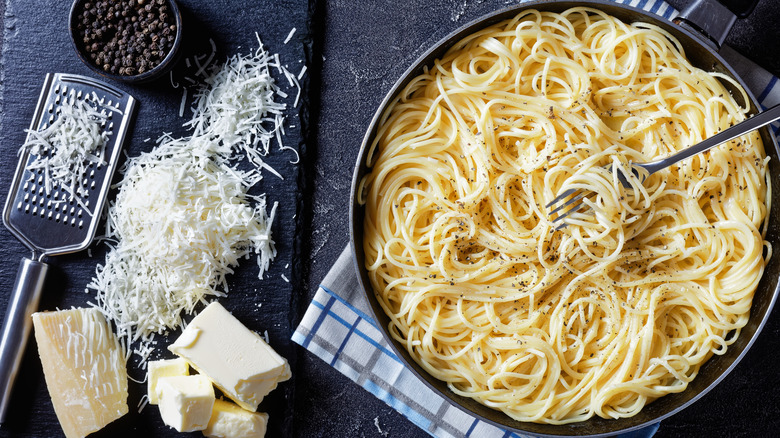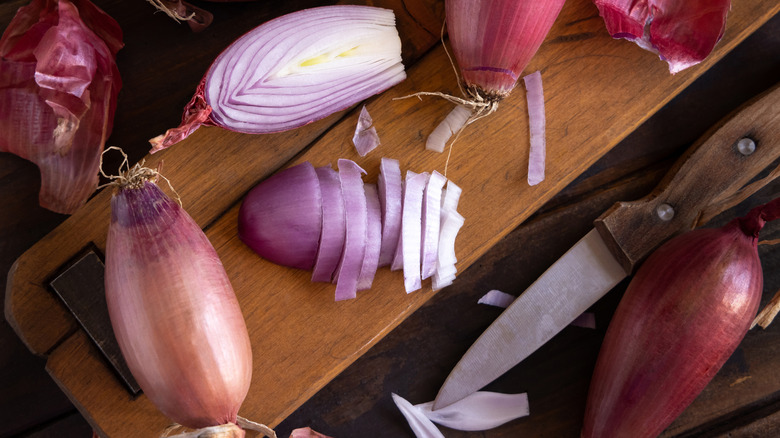Sautéed Shallots Are The Secret Ingredient To Give Your Cacio E Pepe A Kick
Cacio e pepe, which translates from Italian to "cheese and pepper," is a classic pasta dish that's probably so popular because it's delicious with just a few ingredients. In case you don't know, those ingredients are typically thick pasta like bucatini or spaghetti, freshly ground black pepper, salt, parmesan cheese, and butter. Of course, there are many variations out there, including recipes that use a blend of cheeses or add in lemon zest or vegetables. But we've got one secret ingredient that we think easily kicks up the flavor of any pot of cacio e pepe: sautéed shallots.
Why use sautéed shallots in your cacio e pepe? It adds layers of flavor and texture without taking away from the core ingredients of the dish. Shallots have a milder taste compared to other onions, so your dish will benefit from the onion and garlic flavors. When you sauté shallots, they become a bit sweet as they caramelize, which lends itself to the bold flavors of black pepper and freshly grated Parmesan cheese. You'll also get soft bits in every bite, which pairs well with the texture of al dente pasta.
Adding sautéed shallots to cacio e pepe
Making cacio e pepe is very easy, even if you aren't a bonafide home cook. There are many recipes out there (including our classic cacio e pepe and sweet corn variation), but we'll break down the basics. Start by cooking your pasta until it's al dente — and don't overcook it. Meanwhile, melt the butter in a saucepan, add freshly ground black pepper, and cook for about 30 seconds. Remove the pan from heat and add the cheese, pasta, and some pasta water to thicken the sauce.
Now, let's get into when you should add those sautéed shallots to your cacio e pepe: You should sauté the shallots separately before you add them to your sauce. Start by thinly slicing them then put them in a saucepan with butter or olive oil over medium heat. Continue to cook them until they're caramelized, which should take about 10 minutes. You can then add them to the sauce and toss it with the pasta and other ingredients. And if you want an alternative way to add shallots with a crunchier texture, toss the shallots in flour and fry them in oil instead of sautéing before you add them to the pasta.

